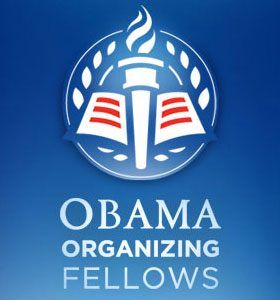Daisy Lee Gatson Bates
Daisy Bates (1914-1999) is renowned as the mentor of the Little Rock Nine, the first African Americans to attend Central High School in Little Rock, Arkansas. For guiding the Nine through one of the most tumultuous civil rights crises of the 1950s, she was selected as Woman of the Year in Education by the Associated Press in 1957 and was the only woman invited to speak at the Lincoln Memorial ceremony in the March on Washington in 1963. But her importance as a historical figure has been overlooked by scholars of the civil rights movement.
Daisy Lee Gatson Bates November 11, 1914 – November 4, 1999 was an American civil rights activist, publisher, journalist, and lecturer who played a leading role in the Little Rock Integration Crisis of 1957.
Tribute To Daisy Bates
Daisy Lee Gatson was born on November 11, 1914. She grew up in southern Arkansas in the small sawmill town of Huttig near the Louisiana line. She was raised by the closest friend of her father, Orlee and Susie Smith. He left the family shortly after her mother's death. In The Death of my Mother, Bates recounted learning as a child that her birth mother had been sexually assaulted and murdered by three local white men. Learning of her mother's death and knowing that nothing was ever done about it fueled her anger.
Daisy's adoptive father Orlee Smith gave her some last advice while on his death bed.
He said, "You're filled with hatred. Hate can destroy you, Daisy. Don't hate white people just because they're white. If you hate, make it count for something. Hate the humiliations we are living under in the South. Hate the discrimination that eats away at the South. Hate the discrimination that eats away at the soul of every black man and woman. Hate the insults hurled at us by white scum and then try to do something about it, or your hate won't spell a thing."
Daisy Gatson attended the segregated schools in Huttig, but it has not been determined how much formal education she received. It is unlikely her education went beyond the ninth grade and may have been no more than four grades.
At the age of fifteen, she met her future husband, L. C. Bates, then a traveling salesman living in Memphis, Tennessee. After the death of her foster father, she apparently moved to Memphis in 1932. Little is known about her until she and her future husband moved to Little Rock in 1941.
In Little Rock they started the Arkansas State Press, a weekly statewide newspaper devoted to advocating civil rights for African Americans. Gatson and Bates were married on March 4, 1942, in Fordyce (Dallas County). Although she rarely wrote for the paper, Bates gradually became active in its operations and was named by her husband as city editor in 1945.
As ardent supporters of the National Association for the Advancement of Colored People (NAACP), both Bates and her husband were active in the Little Rock branch. In 1952, she was elected president of the Arkansas Conference of Branches, the umbrella organization for the state NAACP. She and her husband worked closely with other members of the Little Rock branch as the national strategy of the NAACP shifted in the 1950s from advocating a position of equal funding for segregated programs to outright racial integration.
Although well known in the black community, Bates came to the attention of white Arkansans as a civil rights advocate in 1956 during the pre-trial proceedings of the federal court case, Aaron v. Cooper, which set the stage for the 1957 desegregation of Central High School.
The case was filed for the purpose of enforcing the rights of black children in Little Rock to attend schools with whites in accordance with the U.S. Supreme Court’s decision in Brown v. Board of Education of Topeka, Kansas. Questioned by Leon Catlett, an attorney for the Little Rock school board, Bates refused to allow herself to be called by her first name. She told the attorney, “You addressed me several times this morning by my first name. That is something that is reserved for my intimate friends and my husband. You will refrain from calling me Daisy.” Without hesitating, Catlett shot back, “I won’t call you anything then,” to which Bates responded, “That’s fine.” This challenge to one of white supremacy’s oldest traditions—that of controlling and intimidating African Americans by treating them as though they were children—became part of the front-page story in the next morning’s Arkansas Gazette.
The federal courts at the time allowed the Little Rock school district to set its own pace for desegregation of its public schools, but they could not prevent Bates’s involvement with the first nine students who attended Central High School during the school year of 1957–58. Although Wiley Branton of Pine Bluff (Jefferson County) was the local attorney for the NAACP and handled much of the litigation, Bates, in her capacity as president of the Arkansas Conference of Branches, was recognized as the principal spokesperson and leader for the forces behind school desegregation. In this role, she was in constant contact with NAACP leaders and in constant conflict with segregationists using intimidation in Arkansas. For much of the school year, she was in daily contact with the national office of the NAACP in New York as segregationists battled to destroy the NAACP in Arkansas as well as to intimidate her, her husband, and the Little Rock Nine and their families into giving up the struggle. On occasion, individuals attacked the Bateses’ home in Little Rock, forcing them to stand guard nightly.
"…Daisy Bates and her charges arrived at the school. With surprising ease, they were admitted through one of the less conspicuous entrances. Seconds later, a white female student climbed through a first-story window and yelled that she wasn’t going to school with ‘niggers’. … The sweep of the television cameras showed a crowd that was calm. Many were smiling. None was visibly armed in any way. Things were moving so calmly that the cameramen were observed staging some action. A black was shown on film being kicked in the seat of the pants, but I was told by authorities on the scene that this had been staged. In the crowd, however, were some eight agitators known to the Federal Bureau of Investigation who were there for no good purpose but to create as much chaos as possible. These recruits did not come from Little Rock. They had no children in the school; they were provocateurs. They began to mount on car tops and scream to the crowd. … The agitators first tried to bully the police into defecting. … Tempers began to rise … The leaders of each assault on the police lines were collared and put into police wagons and taken to jail. More than forty persons were taken into custody. No one in the crowd tried to intervene to prevent the arrests and removal of the troublemakers. No one in the crowd had clubs or weapons of any kind. These two points convinced me that 98 percent of the people there were not part of an organized mob…."
Daisy Bates (second from right standing) with fellow "Little Rock Nine."
In recognition of her leadership, the national Associated Press chose her in 1957 as the Woman of the Year in Education and one of the top ten newsmakers in the world. In 1959, as a result of intimidation by news distributors and a boycott by white business owners who withheld advertising, the Bateses were forced to close the Arkansas State Press.
Bates remained at the center of the desegregation battle on behalf of the NAACP and the civil rights movement in Arkansas until June 1960 when she moved to New York to write a memoir of her desegregation experiences in Little Rock, The Long Shadow of Little Rock. She remained president of the Arkansas Conference of Branches until 1961, when she was succeeded by George Howard, Jr., who later became a federal judge. Chosen to fill a vacancy on the national board of the NAACP in 1957, Bates was reelected to successive three-year terms through 1970.
Her prominence as one of the few female civil rights leaders of the period was recognized by her selection as the only female to speak at the Lincoln Memorial at the March on Washington on August 28, 1963.
In 1968, Bates moved to the all-black town of Mitchellville (Desha County) to become executive director of that community’s Economic Opportunity Agency, a federal anti-poverty program. She remained there until 1974, commuting to Little Rock on the weekends to be with her husband. This began a new phase in her life that was marked by a commitment to demonstrating that poor African Americans could achieve economic self-sufficiency in partnership with government. Bates secured grants and donations for several improvements in the community, including a sewer system and a Head Start program.
Bates revived the Arkansas State Press in 1984, but it was financially unsuccessful. She sold the paper in 1988 to Janis and Darryl Lunon.
In ill health the last years of her life, Bates died of a heart attack on November 4, 1999, at Baptist Medical Center in Little Rock. She is buried in Haven of Rest Cemetery in Little Rock.
In 2001, the Arkansas legislature enacted a provision that recognizes the third Monday in February as “Daisy Gatson Bates Day.” Thus, her memory (along with those of American presidents) is celebrated on that date as an official state holiday. There are streets in various towns in Arkansas, including Little Rock, which bear her name. In February 2012,



















































